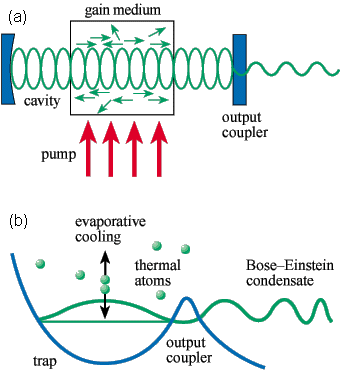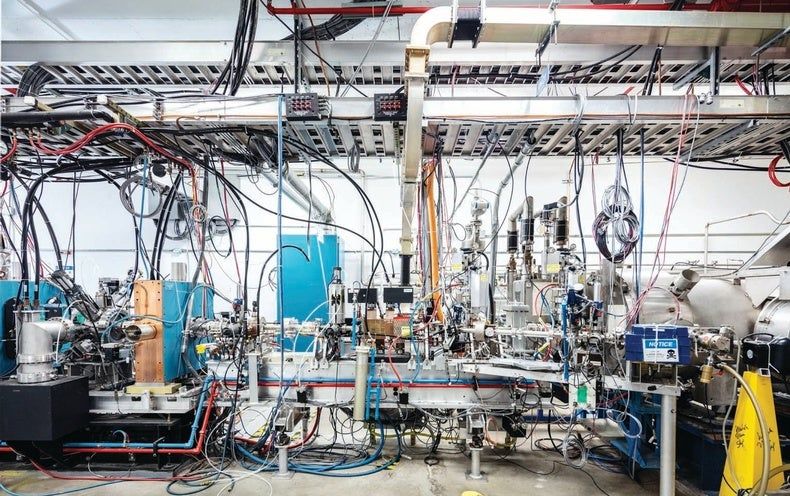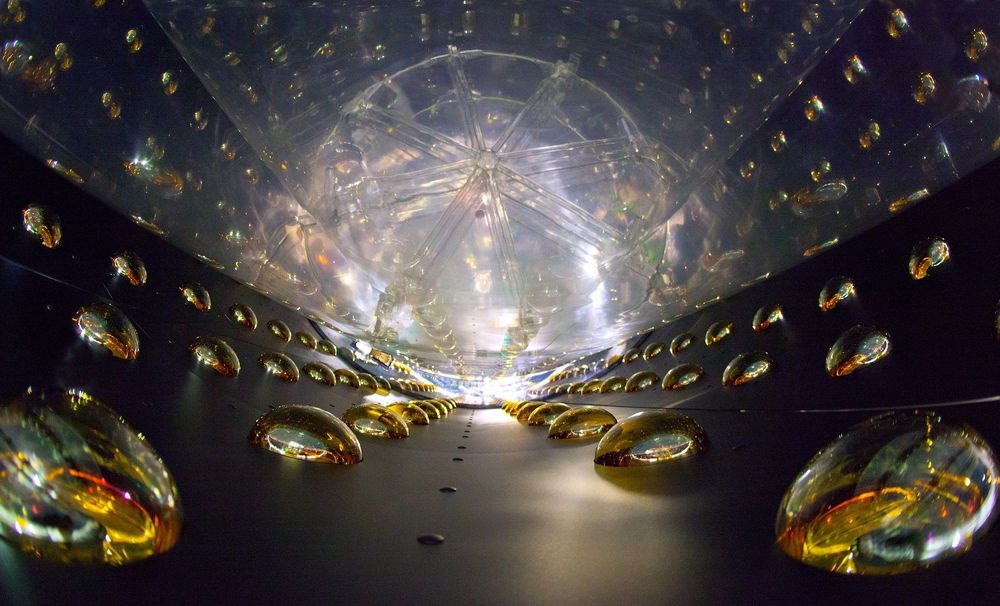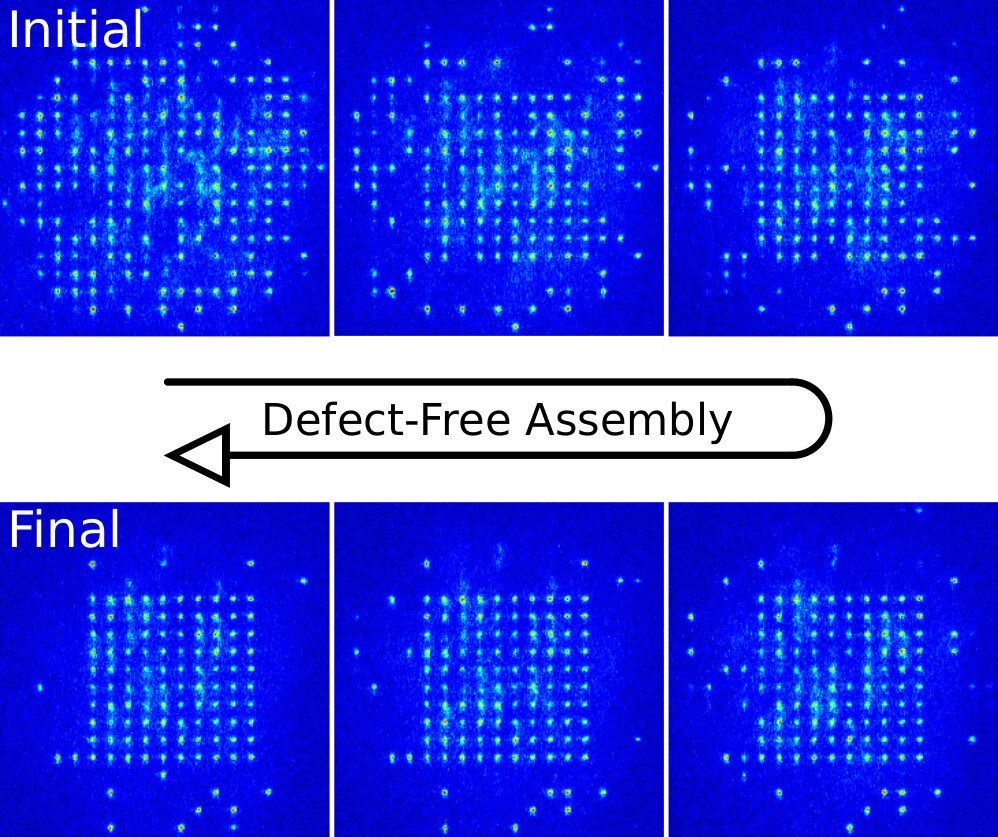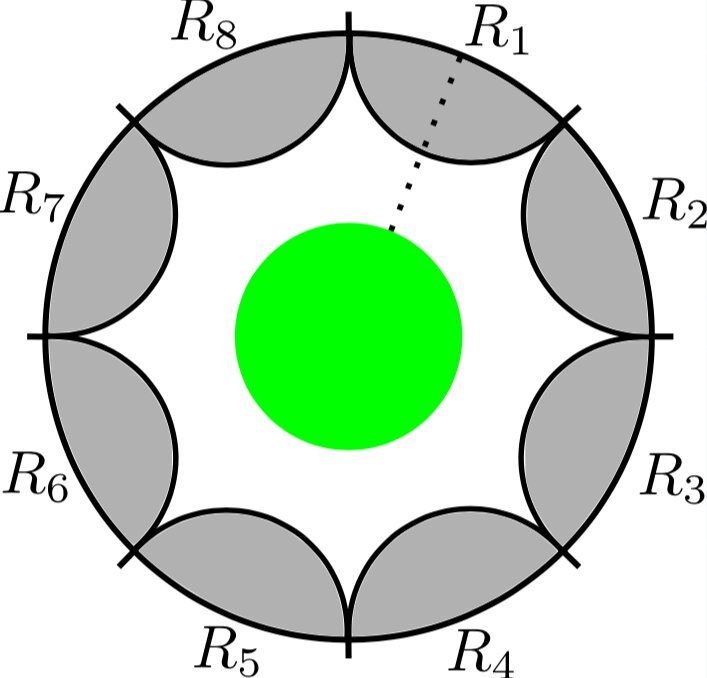Soon after the invention of the laser in the late 1950s many dubbed the discovery as a solutYou’ve reached the limit of what you can view on Physics World without registering If you already have an account on Physics World, then please sign in to continue reading If you do not yet have an account, …
Archive for the ‘particle physics’ category: Page 456
Jun 3, 2019
Physicists can predict the jumps of Schrodinger’s cat (and finally save it)
Posted by Genevieve Klien in categories: particle physics, quantum physics
Yale researchers have figured out how to catch and save Schrödinger’s famous cat, the symbol of quantum superposition and unpredictability, by anticipating its jumps and acting in real time to save it from proverbial doom. In the process, they overturn years of cornerstone dogma in quantum physics.
The discovery enables researchers to set up an early warning system for imminent jumps of artificial atoms containing quantum information. A study announcing the discovery appears in the June 3 online edition of the journal Nature.
Schrödinger’s cat is a well-known paradox used to illustrate the concept of superposition—the ability for two opposite states to exist simultaneously—and unpredictability in quantum physics. The idea is that a cat is placed in a sealed box with a radioactive source and a poison that will be triggered if an atom of the radioactive substance decays. The superposition theory of quantum physics suggests that until someone opens the box, the cat is both alive and dead, a superposition of states. Opening the box to observe the cat causes it to abruptly change its quantum state randomly, forcing it to be either dead or alive.
Continue reading “Physicists can predict the jumps of Schrodinger’s cat (and finally save it)” »
Jun 1, 2019
The Experiment That Will Probe the Deepest Recesses of the Atom
Posted by Genevieve Klien in category: particle physics
Where do protons and neutrons get their mass and spin? Surprisingly, we don’t know. A new facility promises to peek inside these particles to find answers.
Jun 1, 2019
Physicists create stable, strongly magnetized plasma jet in laboratory
Posted by Genevieve Klien in categories: particle physics, space
When you peer into the night sky, much of what you see is plasma, a soupy amalgam of ultra-hot atomic particles. Studying plasma in the stars and various forms in outer space requires a telescope, but scientists can recreate it in the laboratory to examine it more closely.
May 31, 2019
Carnival of Space 613 – Super Alien Neutrino Communication
Posted by Quinn Sena in category: particle physics
May 31, 2019
The defect-free assembly of 2-D clusters with over 100 single-atom quantum systems
Posted by Quinn Sena in categories: particle physics, quantum physics
Researchers at Technische Universität Darmstadt have recently demonstrated the defect-free assembly of versatile target patterns of up to 111 single-atom quantum systems. Their findings, outlined in a paper published in Physical Review Letters, could drive assembled-atom architectures beyond the threshold of quantum advantage, paving the way for new breakthroughs in quantum science and technology.
“Our research is driven by the observation that physical sciences are right in the middle of a paradigm shift in which the application of quantum physics, i.e. quantum technologies, are becoming the leading technologies in the near future,” Gerhard Birkl, one of the researchers who carried out the study, told Phys.org. “A vast list of applications are already foreseeable but I am convinced that of most applications we are not even aware of.”
The next step for the field of quantum science and technology is the development of experimental platforms that offer extensive scalability, multisite quantum correlations and efficient quantum error correction. Over the past century or so, researchers have carried out a substantial amount of work on single quantum systems, laying the foundations for current developments. Atomic quantum systems have played a key role in these studies, particularly neutral atoms trapped by light, as they provide well-isolated quantum systems with favorable scaling.
May 30, 2019
Study points to non-Newtonian force affecting particles’ flight
Posted by Genevieve Klien in categories: particle physics, quantum physics
The quotation marks had the force of tradition—and the tradition of force—behind them.
When Nebraska’s Herman Batelaan and colleagues recently submitted a research paper that makes the case for the existence of a non-Newtonian, quantum force, the journal asked that they place “force” firmly within quotes. The team understood and agreed to the request.
After all, the word has long belonged to classical Newtonian physics: equal-and-opposite reactions, electromagnetism, gravity and other laws that explain the apple-dropping, head-bonking phenomena of everyday experience.
Continue reading “Study points to non-Newtonian force affecting particles’ flight” »
May 28, 2019
Researchers demonstrate constraints on symmetries from holography
Posted by Genevieve Klien in categories: particle physics, quantum physics
A pair of researchers, one at the Massachusetts Institute of Technology (MIT) and another at California Institute of Technology (Caltech) and the University of Tokyo, have recently investigated a set of old conjectures about symmetries in quantum gravity. The specific conjectures of focus: Quantum gravity does not allow for global symmetries; For gauge symmetry, all possible charges must be realized; Internal gauge groups must be compact. Their paper, published in Physical Review Letters, shows that these old assumptions hold within the anti-de Sitter/conformal field theory (AdS-CFT) correspondence.
“Historically, the concept of symmetry has played important roles in physics, both in identifying and formulating fundamental laws of nature, and in using these laws to understand and predict natural phenomena such as dynamics and phases of matters,” Hirosi Ooguri, one of the researchers who carried out the study, told Phys.org. “However, there has been theoretical evidence to suggest that, once we combine gravity and quantum mechanics (the two fundamental ideas in modern physics), all global symmetries are gone.”
In physics, symmetries can be of two kinds: gauge and global. For several decades, researchers have proposed the idea that global symmetries should not be possible in quantum gravity, as the unified theory of gravity and quantum mechanics would not allow for any symmetry. This is a profound claim with important consequences. For instance, it predicts that a proton would not be stable against decaying into other particles.
Continue reading “Researchers demonstrate constraints on symmetries from holography” »
May 27, 2019
Astronomers investigate pulsar wind nebula DA 495
Posted by Genevieve Klien in categories: cosmology, particle physics, space travel
Astronomers have carried out a multiwavelength investigation of a pulsar wind nebula (PWN), designated DA 495, to unveil its mysterious physical nature. Results of the study, based on observations using HAWC and VERITAS ground-based observatories as well as NASA’s NuSTAR spacecraft, are presented in a paper published May 17 on arXiv.org.
Pulsar wind nebulae (PWNe) are nebulae powered by the wind of a pulsar. Pulsar wind is composed of charged particles; when it collides with the pulsar’s surroundings, in particular with the slowly expanding supernova ejecta, it develops a PWN.
Particles in PWNe lose their energy to radiation and become less energetic with distance from the central pulsar. Multiwavelength studies of these objects, including X-ray observations, especially using spatially-integrated spectra in the X-ray band, have the potential of uncovering important information about particle flow in these nebulae. This could unveil important insights into the nature of PWNe in general.
Continue reading “Astronomers investigate pulsar wind nebula DA 495” »
May 27, 2019
This New State of Matter Is a Liquid and a Solid at the Same Time!
Posted by Klaus Baldauf in categories: particle physics, quantum physics, robotics/AI, space

Scientist have just discovered that, at an atomic level, these elements have both liquid and solid states, giving context to what may be hidden in the cores of celestial bodies.
A New State of Water Reveals a Hidden Ocean in Earth’s Mantle — https://youtu.be/pgm4z8vJVVk
Continue reading “This New State of Matter Is a Liquid and a Solid at the Same Time!” »
